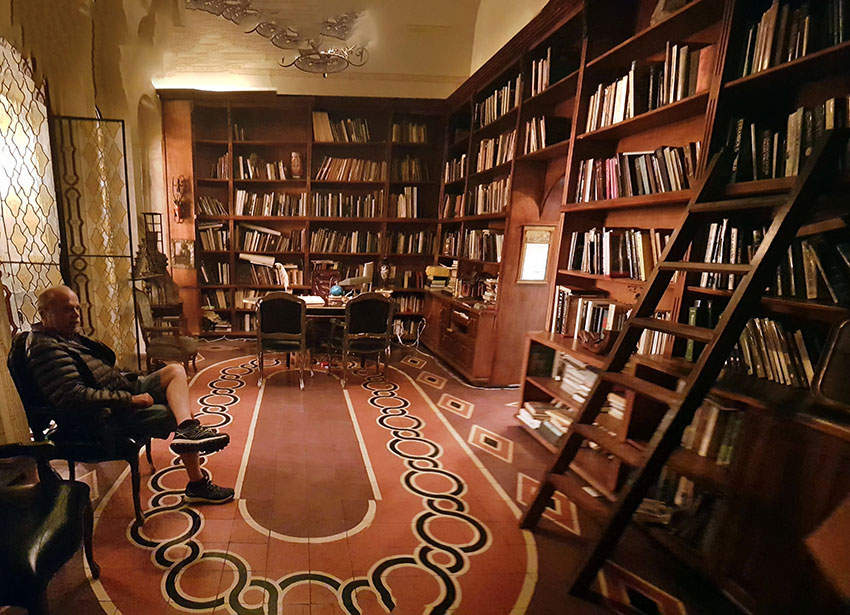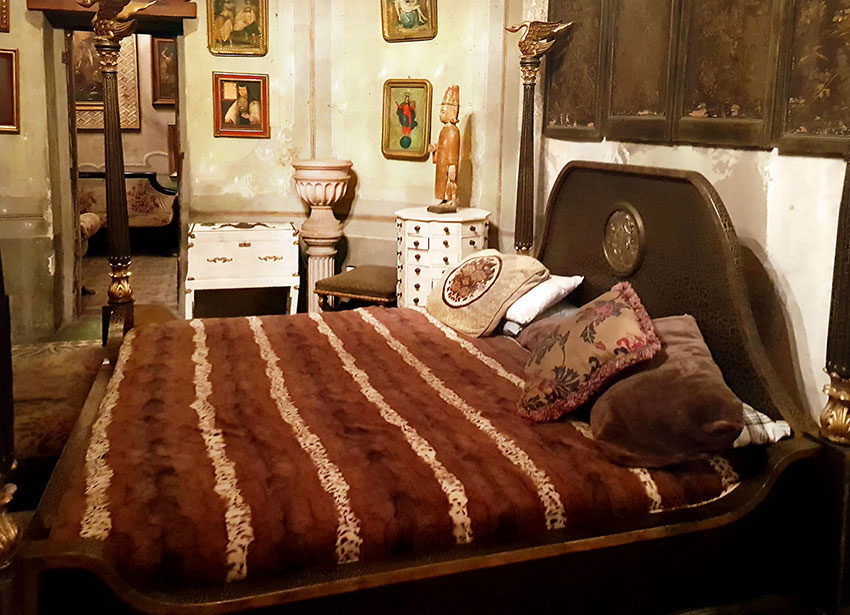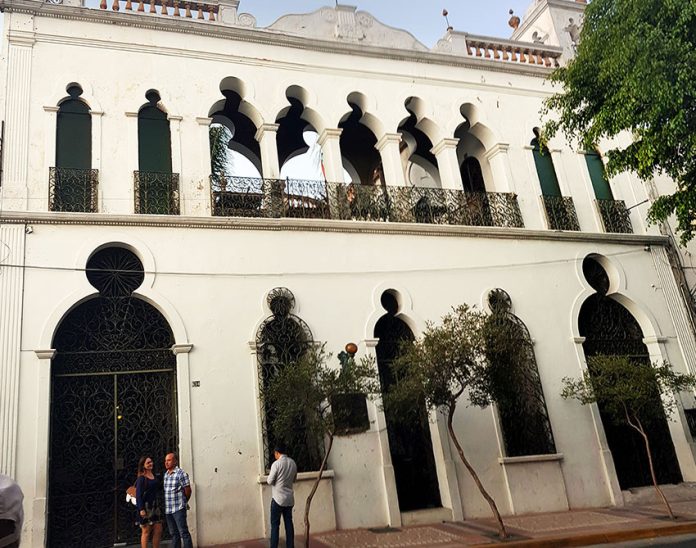The city of Guadalajara was founded 478 years ago and many of its dusty old buildings have extraordinary tales to tell. One of these is El Palacio de las Vacas, an urban legend that few local people have heard of and even fewer have visited. This venerable old mansion was closed to the public for some time but visits are now permitted — only on Sunday nights.
The entrance, at Calle San Felipe 630, immediately grabbed my attention. The windows and doors have a Moroccan design that cried out, “Within these walls something exotic awaits you.”
At 7:00 p.m., Raul Nava, the custodian of the place, opened the doors and led us into a huge, elaborately decorated room with a ceiling three stories high. Here we enjoyed a glass of wine and snacks as Señor Nava recounted the history of the place.
“This mansion was built by President Porfirio Díaz for his cousin Segundo Díaz, because Porfirio wanted Segundo to marry a tapatía, a woman from Guadalajara who was famed for her beauty. Construction was begun in 1850 and completed in 1910. Sixty years it took to build the place, which is not surprising if you consider that this house has 24 rooms, 10 baths, two dining halls, four patios and a chapel.
“Well, Segundo never married that woman, but he did live in the house for a short while, after which he passed the place on to his brother Miguel. Miguel then moved in, but he didn’t like it much and soon moved back out … and it was Miguel who came up with the idea of keeping his cows here overnight, as if the house were a big barn.

“Yes, he actually turned the place into a dairy farm! Well, everybody in Guadalajara was soon talking about Miguel Díaz’s cows ruminating among exquisite murals and from then on it has always been known as the Palace of the Cows.”
The murals Señor Nava referred to have a history all their own. They were painted — over a period of 11 years — by Xavier Guerrero who, together with Diego Rivera, José Clemente Orozco and David Alfaro Siqueiros, founded Mexico’s great muralist tradition.
Guerrero, who had been born in Coahuila, was only 16 years old when he came to Guadalajara and — who knows how — got himself the gig of all gigs: a chance to paint whatever he wanted on 400 meters of walls and ceilings and get paid for it. The youthful artist painted 80 murals in that mansion: pastoral scenes here and biblical scenes there, spiced up a bit with an occasional erotic image. He also added a curious frieze displaying stylized foliage interspersed with nude women whose bodies ended in fish tails, “an anomaly which greatly surprised the owner.”
Over the years, El Palacio de Las Vacas was used for just about every purpose under the sun. “It was a dairy, a grade school, a secondary school, a school of homeopathic medicine, a tapestry workshop, a carpentry workshop and even a brothel. Maybe even a hospital and a kindergarten,” says Julia Escher in a University of Guadalajara publication.
Some say the palace also housed Guadalajara’s first college for women, but historians have found it very difficult to document this or much else of the building’s history.
It is said that one of the building’s owners, a Mexican woman, wanted to tear the palace down and replace it with a parking lot. The city fathers told her she couldn’t do that … which prompted the woman to plug all the downspouts with cement, hoping that the weight of all the water on the flat roof would cause the building to collapse. This did not occur, but the nefarious plan resulted in great damage to many of Xavier Guerrero’s murals.

According to Julia Escher, in 1998 an American named John A. Davis, a retired jeweler from Atlanta, Georgia, bought the place from Alexandra Muir, a member of the famous Muir family of California.
“Davis had fallen in love with El Palacio three years before,” she says, “and he sold everything he had to buy it.”
Davis then moved right into the old house “even though it was falling to pieces and filled with lice and fleas.”
“When I bought the house there was no furniture, no bathrooms, no electricity, no water, no plants,” he told the Guadalajara Reporter, and he spent the next 20 years filling it with antiques and trying to restore it.
However, he was assaulted by armed robbers “on more than one occasion,” and in the end was left penniless. “I worked 40 years to buy this house. It was my life’s work and now I’ve lost everything,” he reportedly lamented.
Davis never stopped trying to find support for the restoration of El Palacio de las Vacas, but in time he fell ill and passed away. Today the place has a new owner who prefers to remain anonymous … or so goes the rumor.
[soliloquy id="103353"]
In fact, while this palace once housed cows, today it seems to house rumors: “Porfirio Díaz once lived here; so did Diego and Frida; the paintings hanging on the walls were done by the most famous artists you can imagine; the house makes strange noises at night and is full of ghosts; President López Obrador’s wife says she is going to restore the old place.”
Not a rumor is the fact that it is now possible to visit the Palace of the Cows on Sunday nights at 7:00 p.m. Better take advantage before the situation changes! For more information check out their Facebook page or call 331 129 5389.
The writer has lived near Guadalajara, Jalisco, for more than 30 years and is the author of A Guide to West Mexico’s Guachimontones and Surrounding Area and co-author of Outdoors in Western Mexico. More of his writing can be found on his website.
